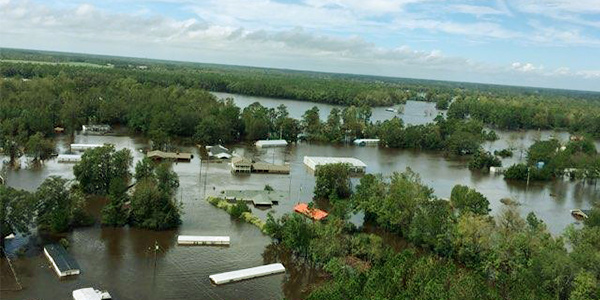Virginia sold $43.6 million in carbon dioxide allowances in its first Regional Greenhouse Gas Initiative (RGGI) auction since joining the cap-and-invest program in January.
“Virginia’s participation in RGGI signals our commitment to addressing climate change while creating economic and health benefits for communities across the commonwealth,” David Paylor, director of the Virginia Department of Environmental Quality, said in a press statement Friday. “Through the work of our agency partners at the Virginia Department of Conservation and Recreation and the Virginia Department of Housing and Community Development, auction proceeds will protect those most vulnerable to the risks of sea-level rise and flooding and apply badly needed upgrades to new and existing residential buildings.”
RGGI’s 51st auction on Wednesday generated $178.4 million for the 11 participating states from the sale of 23,467,261 allowances at a clearing price of $7.60, 19 cents higher than that for the 50th auction in December and 78 cents higher than the 49th auction’s in September.
Allowances in the 11.98 million cost-containment reserve remained unsold, and no allowances in the 11.31 million emissions-containment reserve were withheld. The fixed cost-containment reserve supply was available if allowance prices exceeded $13, while the emissions containment reserve supply was available for withholding if the clearing price fell below $6.
The minimum bid price was $2.38, and the maximum bid price was $12.86, according to the “Market Monitor Report for Auction 51″ prepared by Potomac Economics.
There were 44 winning bidders in the auction, with five bidders purchasing 1 million tons or more and 21 bidders purchasing 200,000 tons or more, the report said. Each allowance represents the authorization to emit 1 ton of CO2. The highest three bidders purchased 4.75 million, 4.075 million and 4.07 million allowances, respectively, according to the report.
Bidders in the auction, the report said, represent organizations in the following categories:
- organizations that acquire and hold allowances primarily for their compliance obligations;
- investors that have compliance obligations but hold allowances in excess of their compliance obligations, potentially for transfer to unaffiliated firms; and
- investors without compliance obligations.
Organizations with compliance obligations and investors with compliance obligations together purchased 44% of the allowances sold in the auction, while organizations with compliance obligations alone purchased 42% of the allowances, the report said. In addition, 31 organizations with compliance obligations and 17 investors submitted bids, and 63 entities were qualified as potential bidders.
RGGI Hopefuls
North Carolina or Pennsylvania could be the next state to join RGGI.
Pennsylvania is in the middle of a rulemaking process to authorize RGGI participation. The Department of Environmental Protection started that process under a 2019 executive order from Gov. Tom Wolf. The department is considering public comments on its proposed rulemaking before issuing a final rule.
The plan to enter RGGI has met significant opposition from the state legislature, which passed a bill last year that said the state could not join the program without legislative action. Wolf vetoed the bill, but Rep. Jim Struzzi (R) reintroduced the legislation (HB 637) at the end of February. The bill now is in the House Environmental Resources and Energy Committee.
In North Carolina, the Southern Environmental Law Center (SELC) filed a petition for rulemaking with the Environmental Management Commission (EMC) for the state to join RGGI.
The petition, which SELC filed on behalf of Clean Air Carolina and the North Carolina Coastal Federation, piggybacks on the state’s effort to identify prudent state carbon policy, Nick Jimenez, staff attorney at SELC, said Thursday during a public outreach webinar. The state released a clean energy plan in 2019, but it did not select any specific policy action. Instead, Jimenez said, the plan called for an academic review of carbon policy options.
The North Carolina Clean Energy Plan “didn’t turn into action,” he said. “It sat on a shelf, and we just don’t have time for that to happen this time.”
The petition to join RGGI sets a timeline to act, he added, but it does not exclude other actions that might come from the academic policy review.
Jimenez said that SELC filed the petition on Jan. 11, and the EMC has 120 days to act on it.
“We don’t expect action sooner than May, but the clock is ticking, and action will come soon,” he said.
The EMC’s Air Quality Committee will hold a public meeting on March 10, during which it will hear a summary of a report on carbon-reduction policies for the North Carolina power sector, as recommended by the energy plan. The report was conducted by Duke University’s Nicholas Institute for Environmental Policy Solutions and the University of North Carolina’s Center for Climate, Energy, Environment and Economics.
